In this ‘Note from the Field’, two Prime Minister’s Rural Development Fellows describe a government funded project in the state of West Bengal that seeks to generate self-employment opportunities and sustainable livelihood options for rural people via self-help groups. They discuss the successes of the project and the lessons that can be learnt for the design and implementation of other such initiatives.
‘Muktidhara’ is a Bengali word which means obtaining freedom from the clutches of poverty, and entering a stream of development through a participatory and collective approach. The Muktidhara project in West Bengal was launched in March 2013 on a pilot basis in Purulia district to improve the socioeconomic status of the rural people, as the district fares poorly in terms of the Human Development Index (HDI) (West Bengal Human Development Report 2004). The project is primarily funded by the West Bengal state government, and the training component is funded by National Bank for Agricultural and Rural Development (NABARD).
Objectives of the Muktidhara project
The primary aim is to reduce the dependency of the livelihoods of rural people on selling fuel wood by addressing concerns pertaining to mono-cropping practices, traditional methods of cultivation, food sufficiency of rural families, effective market linkages and seasonal migration of farmers. The project seeks to address these problems by generating self-employment opportunities and providing sustainable livelihood options to the self-help groups (SHGs) of Purulia. SHGs have been chosen as the unit of intervention with the purpose of building a sense of collective responsibility and ownership. In the initial phase, the project will cover 850 SHGs of Purulia I and Balarampur blocks of the district.
The project seeks to motivate each household of the SHGs to participate in multiple income generating activities and earn at least Rs. 3,000 per month. Moreover, it aims to bring in a sense of women empowerment in the district by involving rural women in livelihood activities, thereby, enabling them to lead dignified lives.
Chalking out family-based plans
Training and capacity-building sessions were organised for graduate Self-help groups (SHGs)12 by trainers from model SHGs covered under the Rajiv Gandhi Mahila Vikas Pariyojana (RGMVP)3 programme that is currently being implemented in the state of Uttar Pradesh. Following this, households in the trained SHGs were encouraged to prepare achievable, outcome-based and time bound plans for their respective families. As most of the women in the target group were farmers, they planned agricultural activities supported by livestock based activities and some plantation works.
Figure 1. Planning livelihood activities
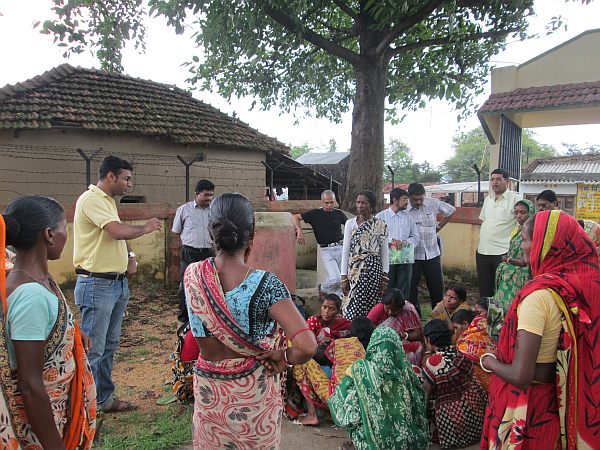
Thus, SHG members planned multiple activities for their families. Bank loans could be obtained through the SHGs to meet the initial investment. These loans were extended primarily by public sector banks such as State Bank of India and Central Bank of India. No collaterals and guarantors were required to sanction these loans. Although these loans were sanctioned to the groups, they were then distributed among the members based on budget estimates of their individual plans. This group approach not only facilitates sanctioning of loans not also ensures repayment.
The district administration team comprising the District Collector, District Rural Development Cell (DRDC) officials, Prime Minister’s Rural Development Fellows (PMRDFs), representatives from the NABARD and key line department officials came together to facilitate efficient implementation of the projects that the households planned for themselves.
At this juncture, it was found that agricultural techniques used by the villagers of Purulia were less advanced as compared to the neighbouring villages. Hence, appropriate interventions to improve practices were undertaken – for example, water management, crop management, pest management, fertiliser management and so on. A handbook to train the field level executives working on the project was developed keeping in mind these agricultural interventions. Moreover, innovations such as machann4 structures for climber plants, system of rice intensification (SRI) and direct seeded rice technology for paddy cultivation were also introduced. For instance, the machann structure costs around Rs. 3000, but the investment ensures cropping practice for at least three years through multiple cropping. These innovations have been operationalised with the help of local experts, and technical inputs from a Community Based Organisation (CBO) working in Purulia were also sought.
Figure 2. Agricultural innovations to improve productivity
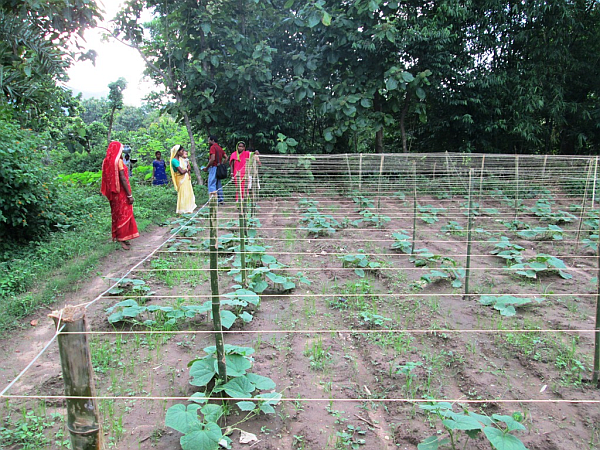
Key features
The ‘Muktidhara’ project has three distinct features:
Zero cash subsidy: The project involves extending the necessary support services to target groups without providing any cash benefit. Input costs for all livelihood activities are incurred by the beneficiaries – these may be financed via bank loans obtained through SHGs. Technical inputs in terms of methods of cultivation, application of fertilisers etc., and other support services such as training, field demonstration etc. are provided by the district administration from time to time.
A unique example of convergence: The project seeks to bring together all relevant stakeholders, and facilitates the utilisation of individual expertise for the collective good of the target groups. One example of convergence is the inclusion of the concerned line departments of the government in the project. Their expertise in various fields such as vaccination of cattle is used on the ground to facilitate the implementation of projects being undertaken by the beneficiaries of the project.
Individual nurturing through group effort: Day to day problems related to livelihood initiatives undertaken by individuals are identified and addressed at the group level. Hence, the group as a whole takes responsibility for the progress of the various activities being carried out by individuals. Community-level resource persons and other concerned stakeholders are called upon for assistance in case of any problems. This not only leads to regular monitoring of the activities and ensures good loan repayment rates of the groups, but also strengthens group dynamism.
Success stories
Gayatri Paramanik, a girl in her 20s, belongs to an SHG called Sathi Mahila Samati. As part of this project, she has prepared a livelihood generation plan for her family. She obtained a loan of Rs. 7,000 from the bank through her SHG, and is now engaged in goat rearing and agriculture. While she initially came forward and raised several doubts with regard to vegetable Machaan cultivation, she now motivates others to take it up as she has been able to earn a profit of Rs. 9,932 (Rs. 3100 expenditure in terms of input costs) from a single crop within a period of three months. Hence, this initiative has provided her with an income of about Rs. 3300 per month out of a 10 decimal land. Given this success, she has now pledged to never keep her kitchen garden fallow in the future as her family often did in the past. She is even happy to report that she is paying her loan interest regularly.
Figure 3. Generating livelihoods for several families
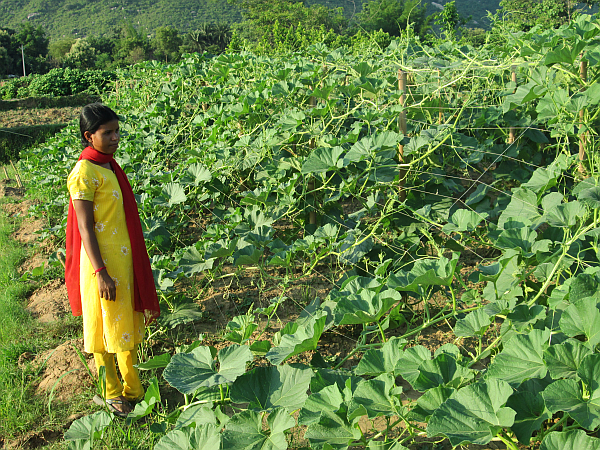
A farmer named Mukhi Majhi has managed to earn Rs. 490 in a period of 28 days from 70 kilograms of white radish which was sown along with bitter gourd, on the same piece of land. Following the three-month period, the bitter gourd plants also started bearing fruit, which would fetch Mukhi at least Rs.25-30 per Kilogram (two tire cropping). Moreover, she has obtained a loan of approximately Rs. 7500 from her SHG for lac cultivation too.
Lessons learned
The implementation of the project so far suggests scope for improvement in the following areas:
- There is a need for a Standard Operating Procedures (SOP) document that will enable more efficient implementation of the project. While a project document does define the broad steps to be undertaken for implementing the project, it does not include details of tasks/ responsibilities of the various stakeholders involved in the project. A comprehensive SOP document should clearly lay down the scope and objectives of the project, roles and responsibilities of the stakeholders, procedures etc.
- There is a need to develop specific and objectively defined performance indicators corresponding to the objectives and activities laid down in the project documents. This will enable systematic tracking of the progress of the project.
- An initial training to the target SHGs has been imparted but there has been no impact assessment of this training till date. Attempts should be made to obtain feedback from beneficiaries on the effectiveness of training imparted. With respect to training imparted in particular fields such as the use of certain agricultural practices, impact can be assessed by observing target groups in their day-to-day activities.
- The initial project document proposed to assess SHGs that were to be brought into the credit mechanism prior to the individual planning process. This assessment was done in terms of credit worthiness, proper accounting mechanisms and other daily activities that the group has to undertake. However, this step has not been followed and may cause problems in loan repayment in the future.
- It has been observed that over-dependence on the district administration is taking away from the sense of ownership that the groups ought to have towards the various livelihood activities that they are undertaking. Efforts should be made to correct this, going forward.
Way forward
Currently this project is running in two blocks of Purulia district, will be replicated in the remaining 18 blocks soon. Further, there are plans to institutionalise the SHGs involved - representatives from these SHGs will represent their groups at sub-cluster and cluster levels, that is, Gram Sansad and Gram Panchayat levels respectively. These cluster level members will represent the larger concerns of the groups and the areas they belong to, and act as an interface between the government agencies and the rural masses for various social issues like education, health, banking services etc.
Notes:
- SHGs that have been in existence for about six months as Grade-I SHGs and have demonstrated the potential to be viable groups become Grade-II SHGs, as per the stipulated norms under Swarnjayanti Gram Swarojgar Yojana (SGSY) Guidelines. Such groups are eligible to receive assistance in the form of bank loans for undertaking economic activities under this project.
- SGSY aims at bringing the assisted poor families (called Swarozgaries) above the poverty line by ensuring appreciable sustained level of income over a period of time. This objective is to be achieved through inter-alia organising the rural poor into SHGs through the process of social mobilisation, their training and capacity building and provision of income generating assets.
- RGMVP is a flagship programme of the Rajiv Gandhi Charitable Trust that works for poverty reduction, women empowerment and rural development in Uttar Pradesh.
- Machaan is a three dimensional structure made of bamboos, galvanised iron wires and nylon threads. This structure provides support to climber plants, which ensures better productivity of vegetables such as bitter gourd, bottle gourd, cucumber etc. Further, it gives ample scope to the farmers to grow a second crop such as turmeric, radish etc., alongside the primary crop.
- System of rice intensification (SRI) is an evolving set of practices aimed at increasing the productivity of irrigated rice by changing the management of plants, soil, water and nutrients.




 14 October, 2013
14 October, 2013 



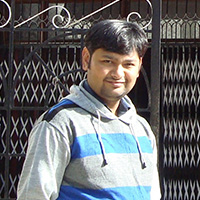
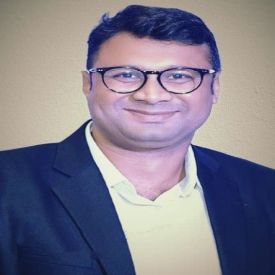
Comments will be held for moderation. Your contact information will not be made public.